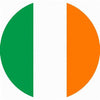What is eye tracking?
The basics
- How it works
- Why it’s unique
What is eye tracking?
Eye tracking, also sometimes referred to as eye gaze or gaze interaction, is a technology used to see where a person is looking on a computer screen. It can also be used to control a computer with a person’s eyes instead of a traditional keyboard and mouse. For people with physical and/or cognitive disabilities, eye-controlled access to computers is a form of high-tech AAC (augmentative and alternative communication). Eye tracking-enabled speech generating devices are game-changers for people with conditions such as MND and cerebral palsy, empowering them to communicate and live their lives to the fullest.
How does eye tracking work for AAC?
Once a clinician recommends an eye-controlled AAC device for a client with a condition such as MND or cerebral palsy, it’s easy to get started with eye tracking. Watch our colleague Victor – who uses his eye gaze device to do his job every day – demonstrate how to get started with a Tobii Dynavox eye tracking-enabled speech generating device:
What are the benefits of eye tracking for AAC?
Some people with disabilities are unable to speak or use a finger or other body part to operate a keyboard, mouse or touch screen. For such individuals, eye tracking-enabled solutions offer the ability to use just their eyes to:
Access computers
Browse the Internet, communicate on mobile phones and use social media, email and other software.
Control the home environment
Use everyday home items such as TVs, air conditioners, lights, doors and more.
Evaluate skills
Look around and perform tasks on a screen to help clinicians, teachers and caregivers assess their eye tracking abilities.
How do eye trackers work?
Steps
The main steps in using eye tracking technology are:
- the eye tracker sends out near infrared light
- the light is reflected in your eyes
- those reflections are picked up by the eye tracker’s cameras
- the eye tracker knows where you are looking through filtering and calculations
Calibration
For eye tracking to work accurately, the eye tracker must know more about a person’s eyes. This is done through a process known as calibration. Calibration lets the eye tracker measure how a person’s eyes reflect light. To calibrate, the end user follows a target moving across the screen, such as a shape or button. For best results, they should be comfortably positioned, with the device adjusted to their height and line of sight.
Selection
There are two ways to select (or click), when using eye trackers, depending on the application and the person’s abilities:
- Dwell: Look at the item you want to select for less than one second to make the selection
- Switch: Look at the item you want to select, then press a switch to make the selection
What makes Tobii Dynavox eye trackers unique for AAC?
Tobii Dynavox eye tracking solutions are custom designed for use in assistive communication. They can be used with precision and ease either indoors or outdoors in bright light, from different body positions and angles.
Accessibility
Our eye tracking solutions are designed specifically for assistive communication and accessibility. This includes the development of outdoor eye tracking, an industry-first for an eye-controlled communication aid. This makes it possible to use our eye-gaze enabled devices outdoors, even in bright sunlight. Tobii Dynavox eye tracking solutions also work equally well indoors, even in well-lit rooms.
Flexibility
Tobii Dynavox eye trackers use a unique and highly accurate 3D model of a human eye. This model holds information about the physical shape of an eye and how light is reflected and refracted, among other things. It’s unnecessary to keep still when using this type of eye tracker. A person’s head can move freely without any significant loss of precision or accuracy. This is particularly beneficial for people with cerebral palsy, who have uncontrolled head movements, or for people with MND or who might adjust their position throughout the day.
Accuracy
For accuracy, eye trackers need to find the pupils (or more precisely, the relationship between the pupils and the glints, or reflections). This can be done through either bright or dark pupil tracking. Some people track better with dark rather than bright pupil tracking. Factors like pupil size, age and environmental lights affect how well someone is tracked using either of the two methods. Tobii Dynavox eye trackers are unique in that they dynamically switch between bright and dark pupil tracking for an optimal eye tracking experience.
Simplicity
Even though eye tracking may be a simple concept, it's a complex and research-intense endeavour to make a product that's easy to use. We strive to make Tobii Dynavox eye tracking technology as simple as possible to use, by listening to on-going feedback from our customers.















